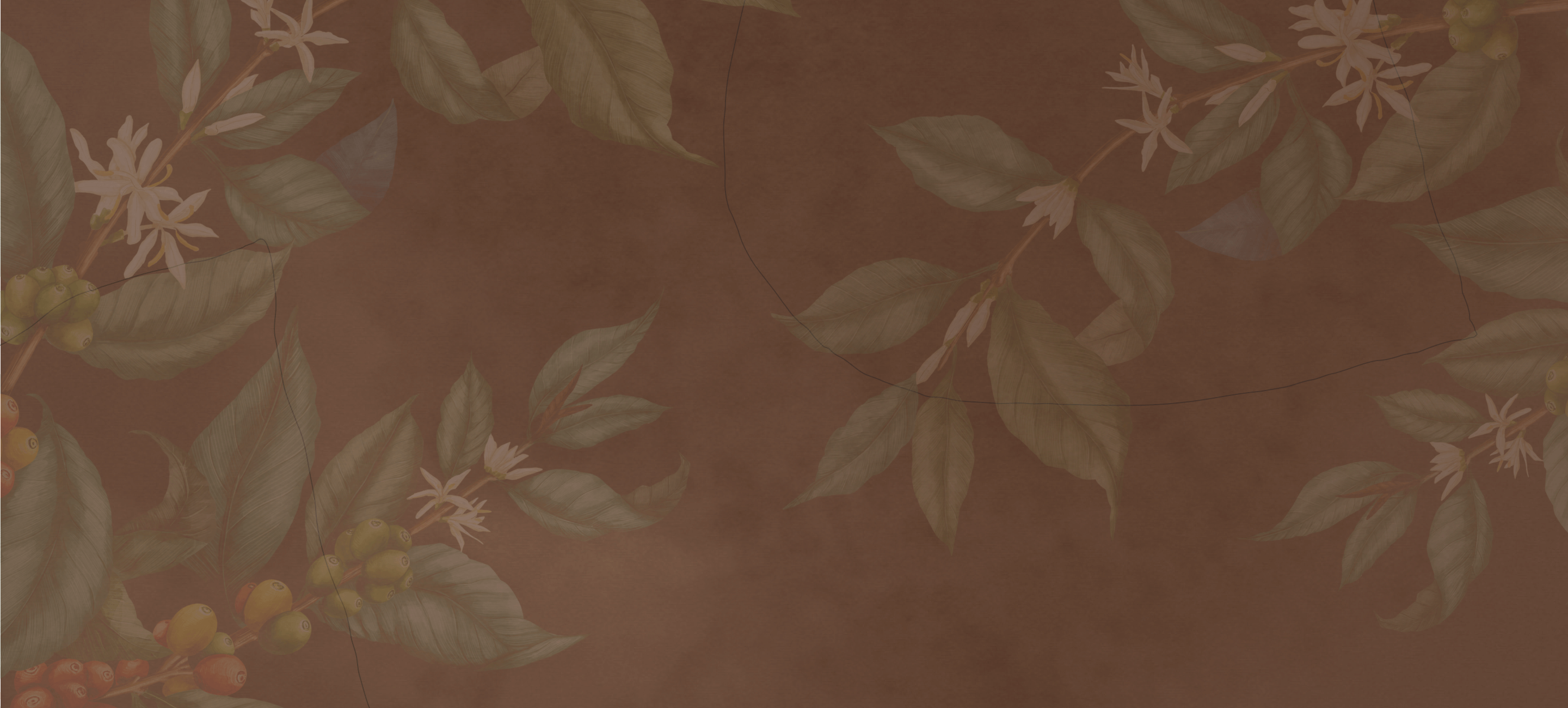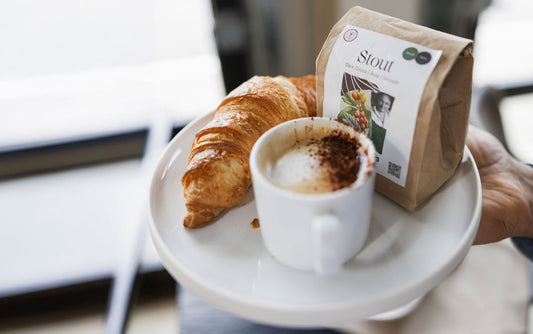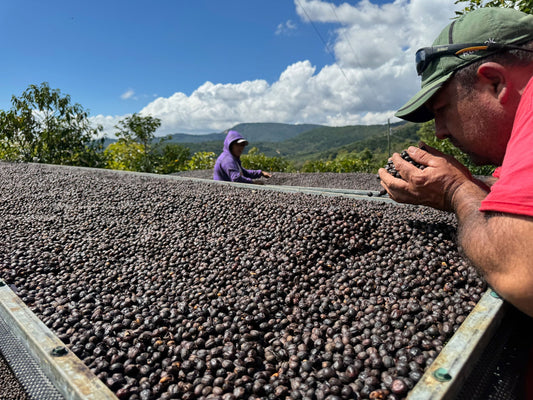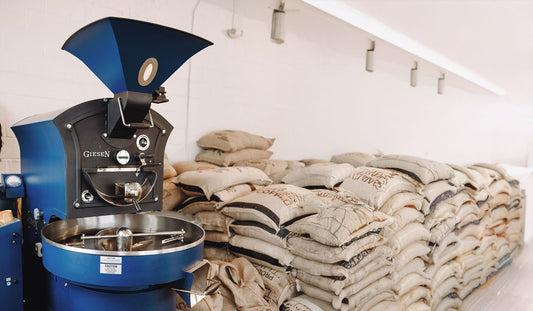How are decaf coffee beans made? This is a common question our customers ask us, with answers that might surprise you.
At Ebru Coffee, we care about more than just making great coffee. We love exploring the science, stories, and traditions that shape each cup, including the journey of decaf. Whether your coffee comes with a kick of caffeine or without, every coffee has a story worth sharing. So, let's talk decaf.
Where Is the Caffeine on the Coffee Bean?

Before we explain the ins and outs of the various decaffeination processes, let’s start at the beginning—the composition of the coffee bean. In order to fully understand what makes coffee decaf, it’s important that you have a fundamental understanding of what the presence of caffeine in a coffee bean actually looks like.
Coffee beans don’t have specific sections or structures that hold their caffeine content. Rather, the caffeine is intrinsically part of the bean itself. It’s distributed throughout the entirety of the bean’s cellular system. In other words, removing caffeine isn’t as easy as snipping part of the plant.
Like everything in nature, the synthesis of caffeine within the bean serves a specific purpose. It acts as a pest repellent, thwarting insects that would otherwise feed on the beans, and also inhibiting the growth of plant species that compete for resources.
Bean Types

The next step in understanding what makes coffee decaf is recognizing which varieties are most suitable for being decaffeinated. How are decaf coffee beans made? Well, they start out as standard coffee varieties before additional processing is done to remove the caffeine.
There are over 129 coffee species, and not all of them are ideal for transforming into decaf. Let’s narrow things down a bit. Arabica and Robusta are the two most popular coffee varieties, and that includes decaf. However, the reasons why they’re both used to make decaf coffee are actually quite different.
Arabica is the most common variety for decaffeinating, due to its lower caffeine content. Simply put, it’s easier to remove fewer caffeine molecules.
On the other hand, Robusta beans contain roughly twice as much caffeine as Arabica beans. Even so, Robusta beans are used prominently to make decaf coffee. The reason is that the decaffeination process actually tames some of the strong, bitter, and harsh flavor notes, resulting in a milder cup of coffee. Yes, decaffeination can be used to alter taste, too.
Roasting Style

The processes that remove caffeine also affect how the beans respond to roasting. Decaf beans are darker and less dense than standard beans, so the roast profile must be adjusted accordingly. You can see the difference in the image above—decaf beans are on the left and regular beans are on the right.
What makes decaf coffee beans different from their caffeinated counterparts? That depends on the process used to remove the caffeine, but in general, the processes weaken the exterior shells of the beans, which causes them to absorb darker colors and heat more easily. That’s why decaf beans are often roasted low and slow, so as to prevent over-roasting.
The Decaffeination Processes
So, with all of that information in mind, how are decaf coffee beans made? There are solvent-based and non-solvent methods. Solvent-based methods tend to be the most economical, and therefore, the most common. However, solvent-free methods are growing in popularity.
Solvent-Based Processes
What makes coffee decaf? There are two schools of thought when using solvents: direct and indirect. Here’s a quick look at both methods:
Direct
- The beans are steamed.
- The beans are repeatedly soaked in a solvent, such as ethyl acetate (EA) or methylene chloride (MC).
- The solvent binds to the caffeine molecules, drawing them out of the beans.
- The beans are steamed again to eliminate any residual solvent.
Indirect
- The beans are soaked in boiling water for hours to open their pores and release their caffeine molecules, as well as the oils and compounds that give the beans their flavorful and aromatic essence.
- The infused water (called Green Coffee Extract or GCE) is moved to a separate tank.
- The GCE is treated with a solvent, which removes the caffeine while leaving the essence of coffee intact.
- The GCE is recombined with the beans, which reabsorb the flavors, but without the caffeine.
Note: Both EA and MC evaporate during roasting, leaving behind no traceable residues in the final product.
Non-Solvent Processes
What makes coffee decaf if solvents aren’t used? How are decaf coffee beans made without chemicals? There are also two main schools of thought with this approach: the Swiss water process and the CO2 process.
Swiss Water
- The beans are soaked in boiling water, removing the caffeine, as well as oils and compounds, creating a GCE—just like the indirect solvent method.
- The GCE is passed through charcoal filters that remove the caffeine molecules.
- The GCE is recombined with the beans, re-infusing them with the flavor, but without the caffeine.
CO2
- The beans are soaked in boiling water to open their pores.
- The beans are exposed to liquid carbon dioxide at extremely high pressure and temperature levels.
- The liquid carbon dioxide works just like a solvent, drawing out the caffeine molecules.
Bonus Insight: Is Decaf Really 100% Caffeine-Free?
Decaf coffee isn’t entirely caffeine-free. Even after processing, a small amount of caffeine remains—usually around 2 to 5 milligrams per cup. In comparison, a regular cup of coffee contains around 95 milligrams. So, while decaf isn’t truly caffeine-free, it’s still a great option for those looking to reduce their caffeine intake.
Experience Farm-to-Cup Coffee

What makes coffee decaf? Now that you understand the science behind “unleaded” coffee, it’s time to experience our specialty coffee beans. We don’t merely craft the finest sustainable, single-origin coffees. Our focus is on the culture and community that makes every cup so rewarding. Whether you prefer traditional or decaf, your new go-to awaits. Shop our natural decaf coffee here!





